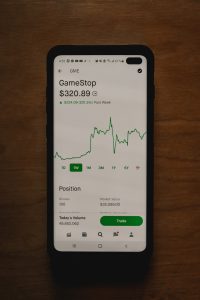Risk management is a crucial aspect of successful forex trading. It is what sets apart professional traders from amateurs. One essential tool that can help traders effectively manage their risk is a forex calculator.
Forex calculators are online tools that allow traders to calculate various aspects of their trades, including position sizes. By using these calculators, traders can determine the appropriate size of their positions based on their account balance, risk tolerance, and the specific trade setup.
Calculating the position size is vital because it determines the amount of money that a trader is willing to risk on a trade. A position size that is too large can lead to significant losses if the trade goes against the trader, while a position size that is too small can limit potential profits.
One of the most commonly used forex calculators for position sizing is the “Percentage Risk” calculator. This calculator allows traders to determine the position size based on a fixed percentage of their account balance that they are willing to risk on a trade.
To use the Percentage Risk calculator, traders need to input their account balance, the percentage of their account balance they are willing to risk on a trade, and the stop loss level of the trade. The calculator then automatically calculates the position size in lots or units, depending on the trader’s preference.
For example, suppose a trader has an account balance of $10,000 and is willing to risk 2% of their account on a trade with a stop loss level of 50 pips. By inputting these values into the Percentage Risk calculator, the trader will find that the position size should be 0.4 lots.
Another useful forex calculator for position sizing is the “Fixed Dollar Amount” calculator. This calculator allows traders to determine the position size based on a fixed dollar amount they are willing to risk on a trade.
To use the Fixed Dollar Amount calculator, traders need to input their account balance, the fixed dollar amount they are willing to risk on a trade, and the stop loss level of the trade. The calculator then calculates the position size in lots or units.
For instance, if a trader has an account balance of $10,000 and is willing to risk $200 on a trade with a stop loss level of 50 pips, the Fixed Dollar Amount calculator will determine that the position size should be 0.8 lots.
In addition to these calculators, some forex trading platforms provide built-in position sizing tools that traders can use. These tools are often customizable and allow traders to adjust their position sizes based on their risk tolerance and trade setups.
Using forex calculators to determine position sizes offers several benefits. First, it helps traders maintain consistency in their risk management approach. By using a calculator, traders can ensure that they are risking the same percentage of their account balance on each trade, regardless of the trade setup.
Second, forex calculators help traders avoid emotional decision-making. By relying on objective calculations, traders can make rational decisions based on their risk management strategy rather than succumbing to fear or greed.
Third, calculators provide traders with a clear understanding of the potential risk and reward of each trade. By knowing the position size and the stop loss level, traders can easily calculate the risk-to-reward ratio and assess whether a trade is worth taking.
It is worth noting that while forex calculators are powerful tools, they should not be the sole basis for position sizing. Traders should also consider other factors such as market conditions, volatility, and trading strategies when determining their position sizes.
In conclusion, risk management is an essential aspect of successful forex trading, and forex calculators can greatly assist traders in calculating position sizes. By using these calculators, traders can determine the appropriate position size based on their account balance, risk tolerance, and trade setup. This helps maintain consistency, avoid emotional decision-making, and provide a clear understanding of the potential risk and reward of each trade.


